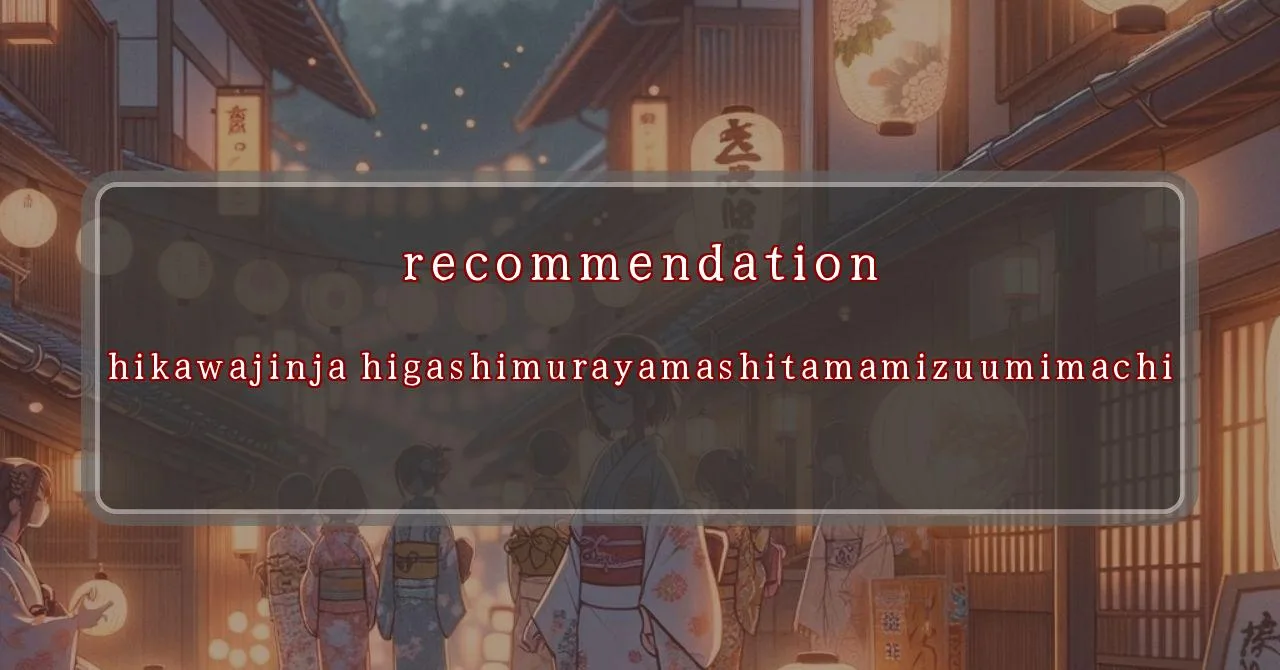Enchanting melodies and vibrant colors await at Hikawa Shrine’s grand festival.
Basic Information
Discover the enchantment of Hikawa Shrine’s grand festival, a spectacle of colors and melodies.
- Phone Number: 042-395-3252
- Access: A short walk from Tamako Station on the Seibu Tamako Line
- Festival Days: September 2nd (Sat) and 3rd (Sun), 2024
Main Events and Attractions of the Festival
Immerse yourself in the vibrant festivities of Hikawa Shrine’s grand festival, where colors dance and melodies enchant.
Mikoshi Procession
Witness the grandeur of the mikoshi procession, a sacred portable shrine carried through the streets by devotees. Adorned with intricate decorations and accompanied by lively music, the mikoshi symbolizes the presence of the enshrined deity and is believed to bring blessings to the community.
Bon Odori Dance
Join the rhythmic beats and graceful movements of the Bon Odori dance, a traditional Japanese folk dance performed during the festival. As the sun sets, the shrine’s grounds transform into a sea of light and motion, creating a captivating spectacle that celebrates the spirits of the departed and brings the community together.
Music and Performances
Delight in a variety of musical performances and traditional arts showcased throughout the festival. From the soulful melodies of Japanese instruments to the vibrant energy of local dance troupes, these performances add to the festive atmosphere and showcase the rich cultural heritage of the region.
Food and Stalls
Indulge in a tantalizing array of food and beverages available at the festival stalls. From classic Japanese delicacies to local specialties, there’s something to satisfy every palate. Browse through the stalls selling traditional crafts, souvenirs, and unique items, taking home a piece of the festival’s charm.
Blessings and Deities
Discover the divine blessings and revered deities enshrined at Hikawa Shrine.
- Deities: The shrine is dedicated to Susanoo-no-Mikoto, a powerful deity known for his bravery, strength, and role in slaying the fearsome eight-headed serpent, Yamata no Orochi. He is revered as a protector against evil and a bringer of good fortune.
- Blessings: Worshippers seek blessings for various aspects of life at Hikawa Shrine, including good health, prosperity, success in endeavors, and protection from harm. The shrine is particularly popular among those seeking blessings for safe childbirth and easy labor.
Origin and History
Unravel the rich history and ancient origins of Hikawa Shrine.
- Establishment: The exact date of the shrine’s establishment is shrouded in mystery, but it is believed to have existed since ancient times. Some historical records suggest that the shrine’s origins may date back to the Nara period (710-794 AD).
- Imperial Connection: Hikawa Shrine has a strong connection to the Japanese imperial family. In the past, members of the imperial court would visit the shrine to offer prayers and seek divine guidance.
- Cultural Significance: Hikawa Shrine is not only a religious site but also a significant cultural landmark. The shrine’s annual festivals and events attract visitors from all over the region, showcasing traditional Japanese customs and performing arts.
Tips and Notes for Visitors
Ensure a fulfilling and enjoyable visit to Hikawa Shrine with these helpful tips.
- Respectful Attire: When visiting the shrine, it is customary to dress respectfully. Avoid wearing revealing or casual clothing.
- Offerings: Visitors are welcome to make offerings at the shrine. Common offerings include monetary donations, rice, sake, and other symbolic items.
- Etiquette: When approaching the shrine’s main hall, purify your hands and mouth at the water basin (temizuya) located near the entrance. Follow the proper etiquette for bowing and clapping before making your prayers.
- Festivals and Events: If you plan to attend one of the shrine’s festivals or events, check the schedule in advance to avoid missing out. These events offer a unique opportunity to experience Japanese culture and traditions.
Parking Information
Find convenient parking options near Hikawa Shrine to ensure a hassle-free visit.
- On-Site Parking: The shrine has a limited number of parking spaces available for visitors. These spaces are usually filled on weekends and during special events, so it’s best to arrive early or consider alternative parking options.
- Nearby Parking Lots: There are several public parking lots located within walking distance of the shrine. These lots typically charge a fee, but they offer a convenient and secure place to park your vehicle.
- Public Transportation: Hikawa Shrine is easily accessible by public transportation. The nearest train station is Tamako Station on the Seibu Tamako Line. From the station, it’s a short walk to the shrine.
Popular Stalls and Food Carts in Recent Years
| Type of Stall | Description |
|---|---|
| Takoyaki | A staple at Japanese festivals. Characterized by a crispy outside and a creamy inside. |
| Jaga Butter | A simple yet popular snack of hot potatoes lavishly topped with melted butter. |
| Baby Castella | Small castella cakes, sweet and fluffy treats enjoyed by children and adults alike. |
| Grilled Ayu with Salt | Fresh ayu fish grilled whole with salt, a savory taste of Japanese summer. |
| Shaapin | A unique gourmet item influenced by foreign cuisine, with a chewy skin wrapping the filling. |
| Okonomiyaki | A Japanese grilled dish where you often choose your own ingredients for a personalized flavor. |
| Cotton Candy | A fluffy, sweet snack that’s extremely popular with children. |
| Chocolate Banana | A banana coated in chocolate, a fun and visually appealing dessert. |
| Kushiyaki | Various types of ingredients skewered and grilled, an easy-to-enjoy snack. |
| Yakisoba | Fried noodles mixed with a special sauce, a fast food favorite in Japan. |



